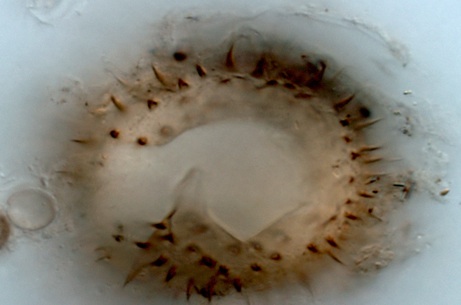
Alumnus Stijn De Schepper talks about his role leading an international research collaboration which aims to understand climate change in the Pliocene.
Stijn De Schepper [2002] is leading an international research collaboration which aims to understand climate change in the Pliocene – a geological time period from 5 to 2.5 million years ago when Earth’s climate was warmer than it is today.
He says: “Geologists are drawn to the Pliocene to understand why global climate was warmer. There are several theories with one of the most accepted being the elevated atmospheric carbon dioxide levels at the time. Investigating this period might help us predict what is going to happen to our climate in the future.”
His research path has been fairly constant since his final-year research project during his geology degree at the University of Ghent. Stijn, who grew up in Belgium in a village close to Bruges, chose to do a final year project with a lot of fieldwork as he hadn’t been able to do much fieldwork in the previous years. The project also involved microfossil work, and he became so fascinated by the secrets these tiny fossils might hold that he is still working with them today.
After his undergraduate degree, he moved to the University of Liège to do a masters. It was here that his work on understanding the impact of climate change in the Pliocene period began in earnest.
Gates Cambridge
After his masters, Stijn worked for half a year as a production geologist at a dredging company. This included work on Dubai’s palm-shaped islands. He says that it soon became clear to him that his interests lay more in long-term scientific investigation than in a commercial enterprise where quick results were the order of the day. It was while he was in this job that he applied to do a PhD at Cambridge and was awarded a Gates Cambridge Scholarship. He describes the whole experience as very enriching on a scientific and personal level, enabling him to mix with researchers in other fields.
For his PhD, he was working mainly on Pliocene microfossils from a drill core in the North Atlantic which was collected by the International Ocean Discovery Program (IODP), a large international marine research collaboration. He collected sediment samples at the IODP core repository in New York and studied the fossil remains of small (15–100 micrometres), single-celled algae called dinoflagellate cysts. Stijn had to identify all the different species of dinoflagellate cysts under the microscope and over the course of his PhD he discovered several species new to science. Some of these were discovered during the investigation of Pliocene sediments collected from a construction site in Antwerp harbour in Belgium. Also during his PhD Stijn did a pilot study to understand the Pliocene history of the North Atlantic Current and its influence on climate.
Ocean currents
Since leaving Cambridge, he has been continuing his work on dinoflagellate cysts, first as a postdoctoral researcher at the University of Bremen in Germany and until earlier this year at the University of Bergen in Norway. By comparing the present-day distribution of the dinoflagellate cysts to their past distribution Stijn can draw conclusions about ocean temperature, ocean currents or sea ice presence. For instance, some dinoflagellates live today in sea ice and discovering their fossil remains can indicate the presence of sea ice in the past. Similarly, some dinoflagellates occur today in tropical seas, and finding their fossils in sediments beneath high latitude oceans indicates that the water temperature there was higher at some point in the past.
Working with colleagues from Germany, Canada, Norway and Belgium he has recently published a paper in PLoS One which concluded that the North Atlantic Current weakened at some point during the warm Pliocene. One of the consequences of this, he says, was that the surface ocean in the northern North Atlantic got cooler, permitting the Greenland ice sheet to expand at that time.
“Our understanding is that the North Atlantic Current stopped bringing warm water to the North. A possible cause is that Pacific water flowing through a seaway in Central America into the North Atlantic disturbed the northward transport of warm waters. But, this hypothesis still needs to be tested by climate models,” says Stijn. He adds that a key question for climate researchers studying the Pliocene period is whether there was any sea ice present in the Arctic and what role this played in the global climate system.
In April Stijn started work on a new project at Uni Research, a research company in Bergen that is a partner in the world renowned Bjerknes Centre for Climate Research. The nine million Norwegian kroner [£880,000] international project which he is leading will investigate the history of Arctic sea ice during the warm Pliocene. Sediment from three ocean drill sites in the Iceland, Greenland and Labrador seas is currently being analysed for dinoflagellate cysts and organic biomarkers.
These data analyses will be complemented by climate model experiments to better understand the links between sea ice, Arctic climate and the Greenland Ice Sheet. As part of the 3.5-year project, Stijn will be supervising a PhD student who will reconstruct the Pliocene Arctic sea ice evolution for the first time. He says the project is very exciting and that Uni Research Climate was the most logical place to do it, given their strong experience in past, present and future climate research. “It is important that we understand what was happening with sea ice in the past so we can understand what might happen to the future Arctic and global climate,” says Stijn.
*The picture shows the fossil remains of a dinoflagellate that lives in areas with extensive seasonal sea ice cover. Credit: Prof. Martin J. Head, Brock University, Canada.












